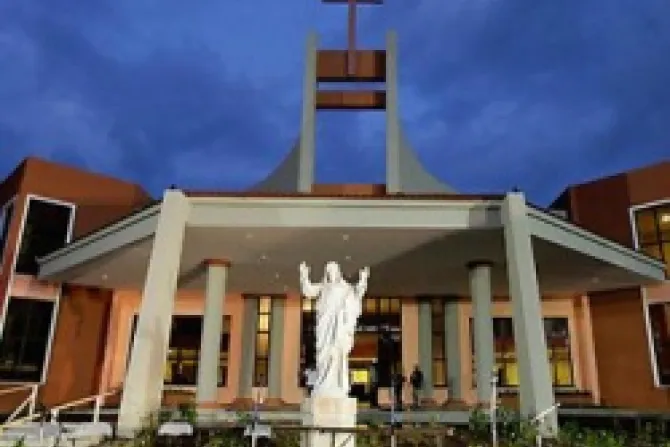Havana, Cuba, Mar 29, 2012 / 12:36 pm
For the people of Cuba, the recent visit of Pope Benedict XVI is both a sign of hope and a call to spiritual renewal.
On March 28, the Pope encouraged the nation to “look again to the faith of your elders” as a source of “strength to build a better future.”
After facing numerous challenges in recent years, the Catholic Church in Cuba is continuing to overcome obstacles as it proceeds on its journey of faith.
Both its turbulent past and hope for the future are illustrated by the new San Carlos and San Ambrosio Seminary, which sits on archdiocesan land on the outskirts of Havana.
When the seminary facility was inaugurated in Nov. 2010, it became the most prominent new religious building in the country in over half a decade since Fidel Castro took power in 1959.
The new location provides more space and a quiet, more peaceful atmosphere than the historical seminary, which was built by Jesuits in the mid-18th century and is located in the tourist center of Old Havana.
Both the Knights of Columbus and the U.S. Conference of Catholic Bishops helped to fund the construction of the new facility, which includes classrooms, dormitories, offices and a chapel, as well as a dining room, a library and recreation space.
At almost 6,000 square meters in area, the building can house up to 100 seminarians.
However, it is currently home to just over 50, illustrating the shortage in vocations that the country is currently experiencing.
Cuba is home to about 6.7 million Catholics, making up just over 60 percent of the country’s population of 11 million.
However, the nation has only about 350 priests and 650 religious to serve the people.
While recent years have seen low levels of new vocations in many countries, the Church in Cuba has faced particular challenges, including repression under an atheist state.
The Church is now in a period of recovery in the twenty years since the state ceased its official support of atheism.
When Pope John Paul II visited the island country in 1998, he blessed the cornerstone of the seminary, emphasizing its importance for the future of the local Church.
The former Pope’s historic visit also helped to promote better relations between the Church and state in Cuba. The Catholic Church played a significant role in working to obtain the freedom of 52 Cuban political prisoners in 2010.
Now, the country is turning to the leadership of Pope Benedict XVI, who visited the island country on March 26-28.
(Story continues below)
At a welcoming ceremony shortly after he descended from the papal plane, Pope Benedict acknowledged the impact of his predecessor’s 1998 visit to Cuba.
He said that Pope John Paul II brought “a gentle breath of fresh air” that strengthened the country and “left an indelible mark on the soul of all Cubans.”
Continuing the message of the previous Pope, the Holy Father encouraged the people of Cuba to return to the rich faith that shaped the nation’s history in order to achieve a “rebirth of society.”
In doing so, he emphasized the need to embrace and live out the “spiritual and moral values which fashioned the nation’s true identity.”



